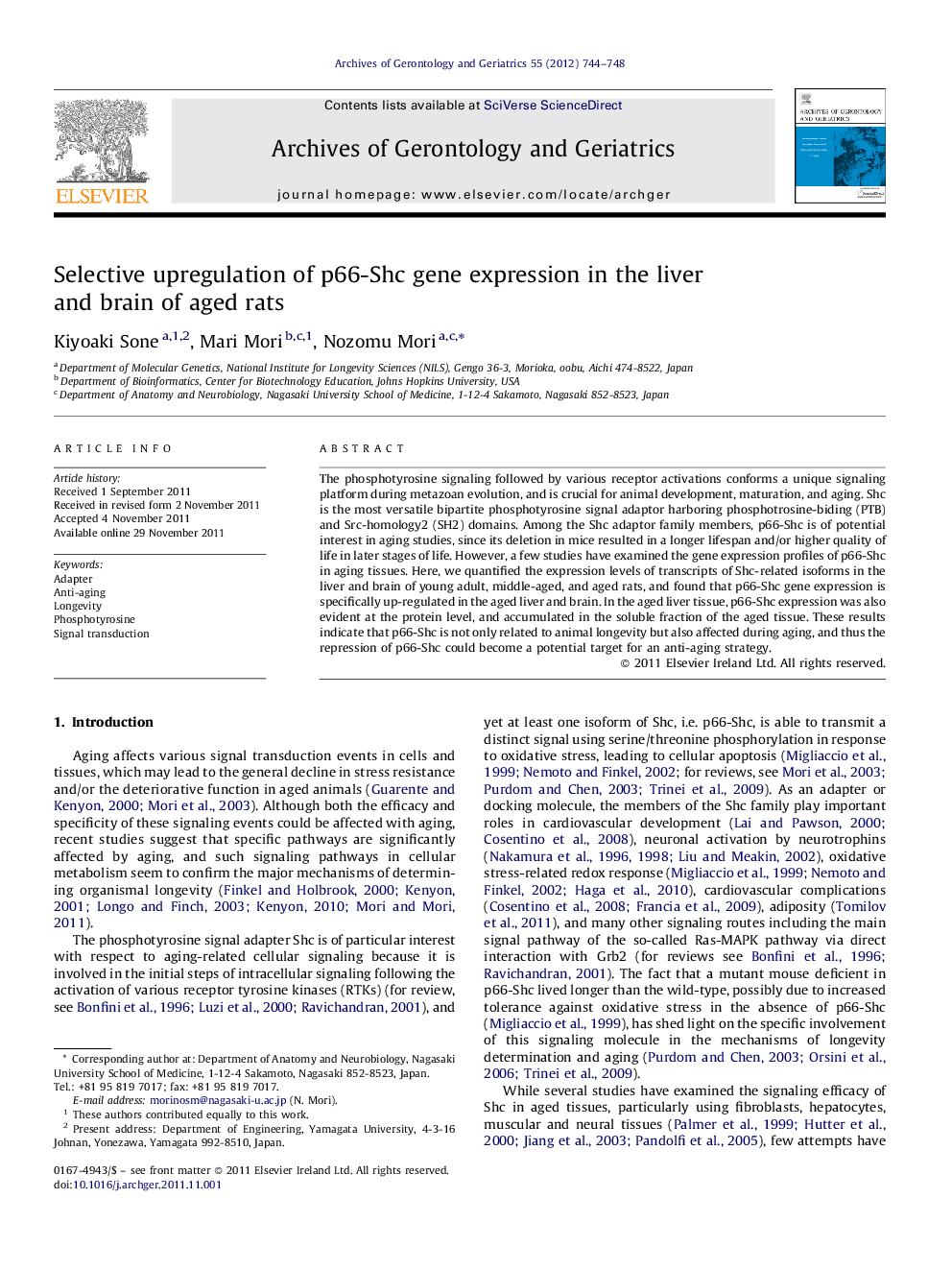| Article ID | Journal | Published Year | Pages | File Type |
|---|---|---|---|---|
| 1903660 | Archives of Gerontology and Geriatrics | 2012 | 5 Pages |
Abstract
The phosphotyrosine signaling followed by various receptor activations conforms a unique signaling platform during metazoan evolution, and is crucial for animal development, maturation, and aging. Shc is the most versatile bipartite phosphotyrosine signal adaptor harboring phosphotrosine-biding (PTB) and Src-homology2 (SH2) domains. Among the Shc adaptor family members, p66-Shc is of potential interest in aging studies, since its deletion in mice resulted in a longer lifespan and/or higher quality of life in later stages of life. However, a few studies have examined the gene expression profiles of p66-Shc in aging tissues. Here, we quantified the expression levels of transcripts of Shc-related isoforms in the liver and brain of young adult, middle-aged, and aged rats, and found that p66-Shc gene expression is specifically up-regulated in the aged liver and brain. In the aged liver tissue, p66-Shc expression was also evident at the protein level, and accumulated in the soluble fraction of the aged tissue. These results indicate that p66-Shc is not only related to animal longevity but also affected during aging, and thus the repression of p66-Shc could become a potential target for an anti-aging strategy.
Related Topics
Life Sciences
Biochemistry, Genetics and Molecular Biology
Ageing
Authors
Kiyoaki Sone, Mari Mori, Nozomu Mori,
